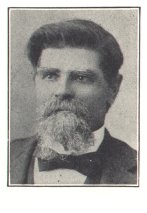I often take the time to discuss critical thinking, and the various forms of irregular medicine that feed off of a lack of it, with medical students, physician assistants in training, and residents. They usually don't have much to say because, unfortunately, they don't tend to have much knowledge on the subject. But several months ago I was suprised by the vigorous defense put up by one intern of the practice of ear candling, which is in reality simply the shoving of a cone of paper and beeswax into one's ear and setting it aflame.
The young physician was convinced of the efficacy of this dangerous and thoroughly useless endeavor. She had seen the results with her own eyes and she had felt the relief from her headaches that the procedure had provided. And despite all of my best efforts to explain in detail how easy it is for us to be fooled into thinking that a treatment works when it doesn't, and how ear candling has been shown time and time again to be ineffective and unsafe as well as completely devoid of any plausible mechanism of action, she remained stalwart in her conviction that she had reaped the benefits.
Such belief despite a lack of evidence and plausibility is concerning to me. My fear is that if a medical professional is able to disregard critical reasoning and accept such foolishness as ear candling, then that individual may also come to see other, perhaps even more dangerous, forms of quackery as legitimate and recommend them to their patients. There are already countless proponents of snake oil and flim flam at work in the world pushing bogus therapies like chiropractic and naturopathy, many of which include ear candling in their repertoire. A number of these trick and treaters place an MD after their name, and never fail to take advantage of the increased clout that fact brings despite also often attempting to establish a false dichotomy between so-called alternative medicine and science-based practice.
In my online research, done for the advancement of my critical reasoning skills despite the inevitable and near overwhelming sense of doom such activity typically leads to, I have perused hundreds of websites touting the positive health effects resulting from ear candling. The most recent, wwwDOTearcandlingDOTcom, reveals that "For thousands of years, a form of hygiene known as Ear Candling, was used as a way of naturally cleansing the inside of the ears and head." The claim of cleansing inside the head was something I had not heard before however.
According to the website, which is run by Sharon Caren, a massage therapist with a knack for clearing your soul (for a price), "It is believed as the candle burns, gentle warm smoke is drawn into the ear canal that softens and loosens candida, wax, and other debris through osmosis. This means anything on the other side of the eardrum turns into a gas form to pass through the ear drum membrane. It is then collected into the remaining unburned portion of the candle." Caren, a certified ear hygienist, goes on to state that ear candling can be enjoyed by infants and dates back centuries to ancient Greece where it was responsible for laying the foundation of Western civilization. Okay, I made that last part up.
Comical pseudohistory aside, these claims are dangerous and quite absurd. Even if accurate, there simply is no need for the overwhelming majority of folks to worry about earwax. One of the first medical maxims I learned as a student was to never place anything in one's ear smaller than one's elbow, and that includes Q-tips. It simply isn't necessary, despite what our mothers told us, for the overwhelming majority of people to clean out their ears. If you are truly interested in the diagnosis and management of cerumen impaction, please by all means check out the clinical guidelines recently released by the American Academy of Otolaryngology-Head and Neck Surgery (AAO-HNS). It's a real page-turner.
The second dictum I learned was to never poke the skunk. This usually applies to ordering uneccessary labs and imaging studies but it also applies to ear candling. If you only need to know the serum sodium, you shouldn't check a basic metabolic profile because you can put good money on that potassium coming back falsely elevated, buying the patient another blood draw to confirm the result as spurious. Similarly, if a procedure isn't going to help don't do it, especially if it carries with it the risk of dripping hot wax onto the tympanic membrane, deafness, or burning your house down.
The devices aren't FDA approved and just about every legitimate medical organization has spoken out against them. Multiple studies have shown that ear candling doesn't create negative pressure, as theorized by proponents, doesn't remove ear wax or anything else from inside the ear (or sinus cavities), doesn't in any way lead to improved health or a boosted immune system, and is dangerous. Any residue left over after a session is the melted wax from the apparatus itself and nothing more. But at up to 18o dollars per session, that sense of emptiness in your wallet is probably very real.
Subscribe to:
Post Comments (Atom)




2 comments:
My, Mr Knudsen, I am constantly in awe at the way that you thrown yourself into new projects during the fruitful autumn of your life.
However, may I say that this is an interesting enough series that I hope that you will compile it into a gift package at some time.
Failing you having the time, Ben Goldacre's Bad Science book has a section on ear candling. You might lend it out or just use it to waft the air round your students' heads.
It's important for medical professionals to critically evaluate all treatments.
Post a Comment